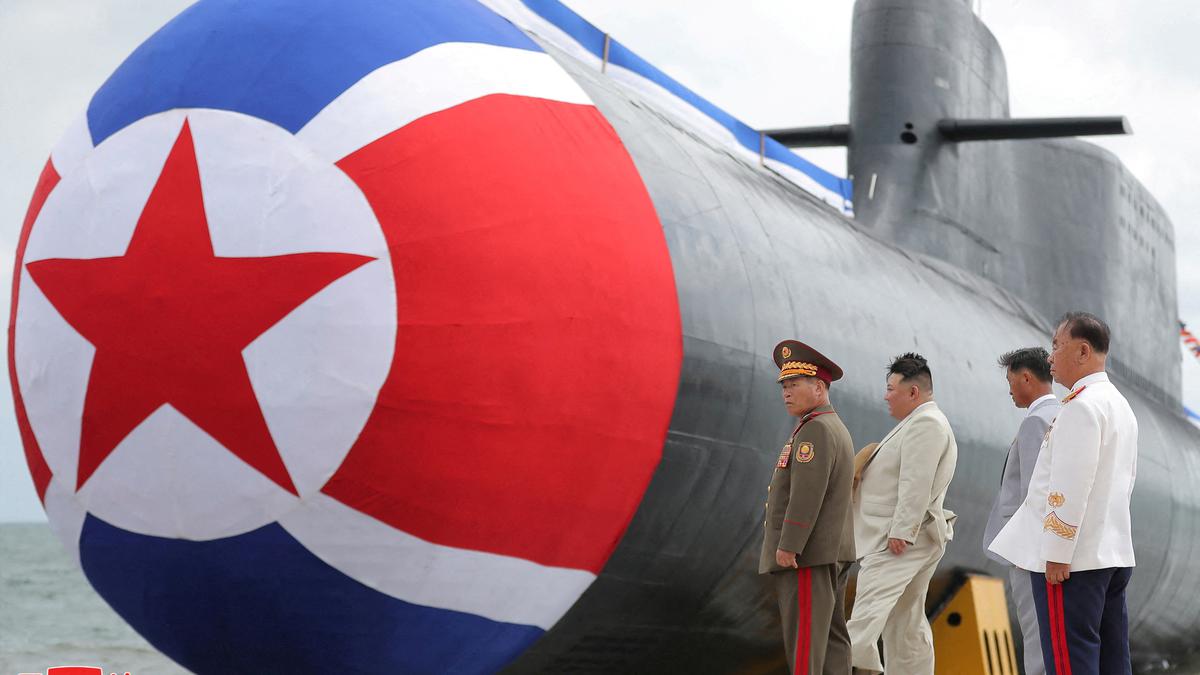North Korea has announced the launch of a purported nuclear attack submarine, marking a significant development in its efforts to build a nuclear-armed navy. Leader Kim Jong Un described this milestone as crucial in countering the United States and its Asian allies. However, skepticism surrounds the submarine’s actual capabilities, with doubts about its readiness for operational duty and concerns about exaggeration.
North Korea’s Nuclear Attack Submarine
- North Korea claims to have launched the submarine “Hero Kim Kun Ok,” with nuclear attack capabilities.
- Kim Jong Un emphasizes the importance of building a nuclear-armed Navy to counter the U.S. and its allies.
- The vessel is designed to launch tactical nuclear weapons from underwater, but the number of missiles it can carry and fire remains unspecified.
Doubts Surrounding the Submarine’s Capabilities
- South Korean officials express skepticism regarding the submarine’s functionality, suggesting it may not be ready for operational use.
- The submarine’s development underscores North Korea’s ongoing efforts to extend its nuclear arsenal’s range and make it less detectable.
- Analysts believe the submarine may be based on 1950s Soviet-origin technology, with inherent limitations.
Challenges and Limitations
- While the submarine may complicate targeting challenges for the U.S. and its allies, it has limitations, including noise, slow speed, and limited range.
- Building a fleet of such submarines for North Korea would require significant time, resources, and technological advancements.
Satellite Images and Analysis
- Satellite images reveal the submarine in the eastern port city of Sinpo, where North Korea operates a major shipyard for submarine development.
- The vessel appears to have at least ten launch tubes, possibly designed for missiles.
- Experts suggest the submarine’s development may be based on an existing Romeo-class submarine, with modifications.
Implications of Submarine Development
- North Korea’s pursuit of submarine-launched ballistic missiles aims to enhance its nuclear deterrent by ensuring a survivable capability to retaliate after a land-based nuclear attack.
- Ballistic missile submarines could pose a maritime threat, complementing its existing land-based missile systems.
International Reactions and Future Scenarios
- South Korea expresses doubts about the submarine’s capabilities, suggesting deception or exaggeration.
- Japan raises concerns about North Korea’s military activities, citing an increased threat.
- North Korea’s focus on strengthening its navy may signal a desire to expand military cooperation with Russia, potentially exchanging weapons technology for economic aid.
Russia’s Role and Nuclear-Powered Submarines
- North Korea seeks to produce nuclear-powered submarines in the future.
- The effectiveness of Pyongyang’s submarine-launched missiles remains a subject of debate, with land-based missiles considered more reliable.
- Kim’s submarine launch sends a deterrent message, indicating progress in North Korea’s nuclear program.
North Korea’s announcement of a submarine capable of launching nuclear weapons has sparked questions about its actual capabilities and readiness. While it signifies North Korea’s continued efforts to bolster its nuclear arsenal, experts highlight inherent limitations in the submarine’s design. International reactions range from skepticism to concerns about regional security. The path forward for North Korea’s naval ambitions remains uncertain, with potential implications for regional stability and international relations.




